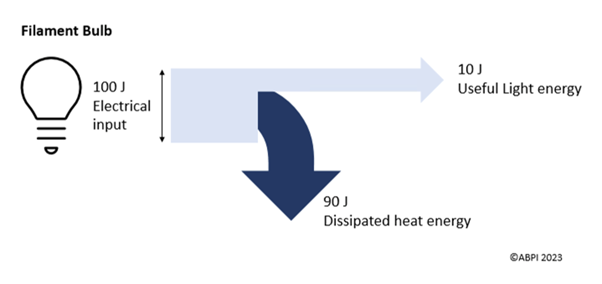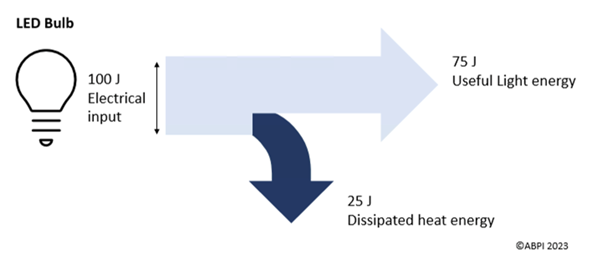This topic takes on average 90 minutes to read.
There are a number of interactive features in this resource:
 Physics
Physics
 Science
Science
Energy can be transferred from one type to another, but some energy will be dissipated. This reduces the amount of useful energy.
For example, electrical items will transfer electrical energy into useful energy such as thermal, light or sound. During this process some energy will be dissipated as heat, reducing the amount of useful energy.
An example is this filament light bulb. It takes 100 joules of electricity to work, but only 10 joules of that are useful, in the form of light energy. The remaining 90 joules are dissipated as heat.

This means that the bulb is 10% efficient, as:
In this case, this would be:
Newer light emitting diode (LED) bulbs are more efficient. This means they transfer more energy to a useful source than a dissipated one.
This LED bulb takes 100 joules of electricity to work, but 75 joules of that are useful, in the form of light energy. The remaining 25 joules are dissipated as heat.

This means that the bulb is 75% efficient, as:
In this case, this would be:
The more efficient an appliance is, the less this appliance contributes to global warming. This is because less fossil fuels need to be combusted to get the same amount of useful energy. Therefore, less greenhouse gases are released into the atmosphere.
More efficient appliances are also cheaper to run, lowering household bill prices.
For this reason, running more efficient appliances in the home is advised.
Complete the 5 efficiency questions below.
